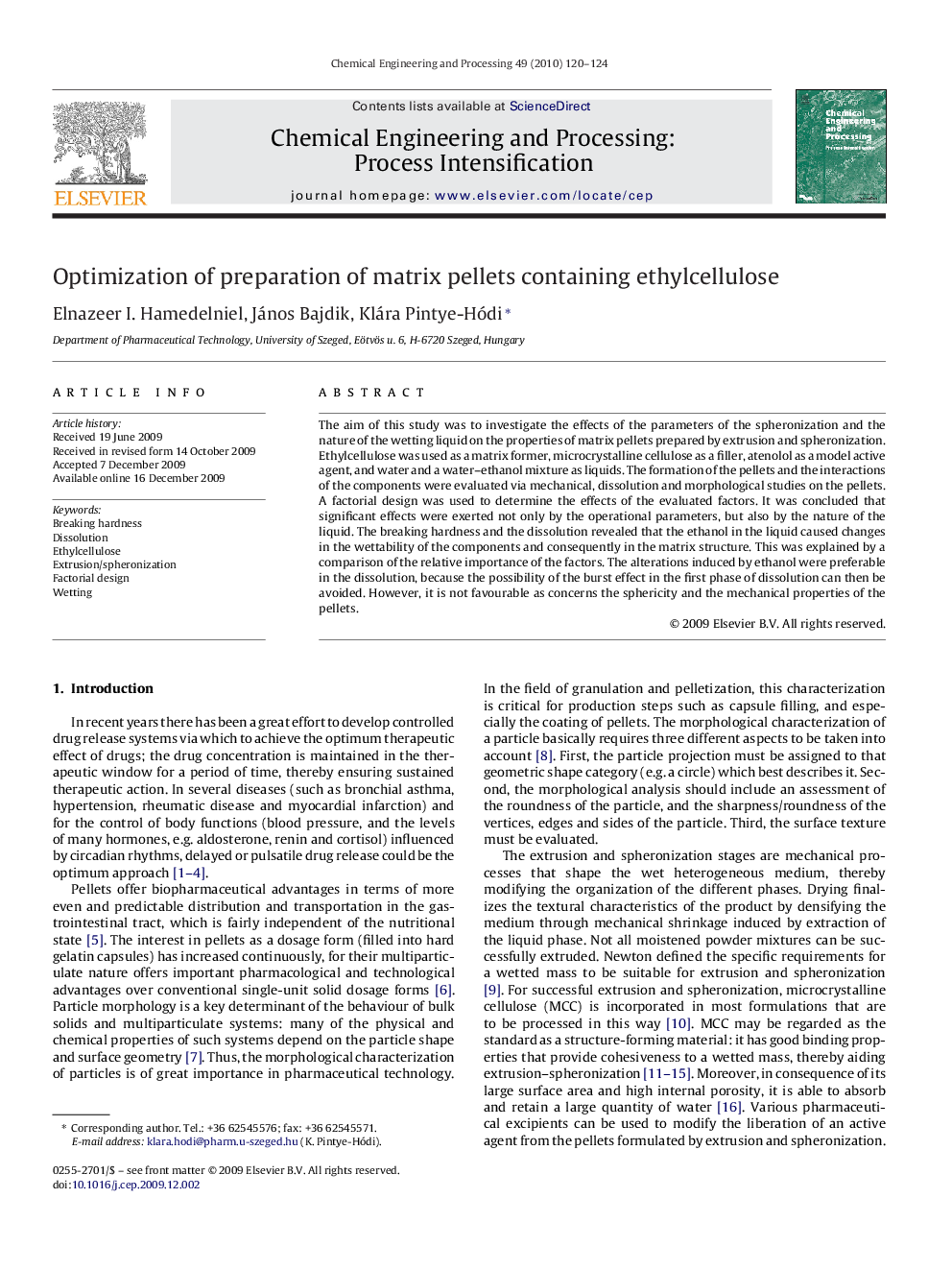| Article ID | Journal | Published Year | Pages | File Type |
|---|---|---|---|---|
| 687461 | Chemical Engineering and Processing: Process Intensification | 2010 | 5 Pages |
The aim of this study was to investigate the effects of the parameters of the spheronization and the nature of the wetting liquid on the properties of matrix pellets prepared by extrusion and spheronization. Ethylcellulose was used as a matrix former, microcrystalline cellulose as a filler, atenolol as a model active agent, and water and a water–ethanol mixture as liquids. The formation of the pellets and the interactions of the components were evaluated via mechanical, dissolution and morphological studies on the pellets. A factorial design was used to determine the effects of the evaluated factors. It was concluded that significant effects were exerted not only by the operational parameters, but also by the nature of the liquid. The breaking hardness and the dissolution revealed that the ethanol in the liquid caused changes in the wettability of the components and consequently in the matrix structure. This was explained by a comparison of the relative importance of the factors. The alterations induced by ethanol were preferable in the dissolution, because the possibility of the burst effect in the first phase of dissolution can then be avoided. However, it is not favourable as concerns the sphericity and the mechanical properties of the pellets.
